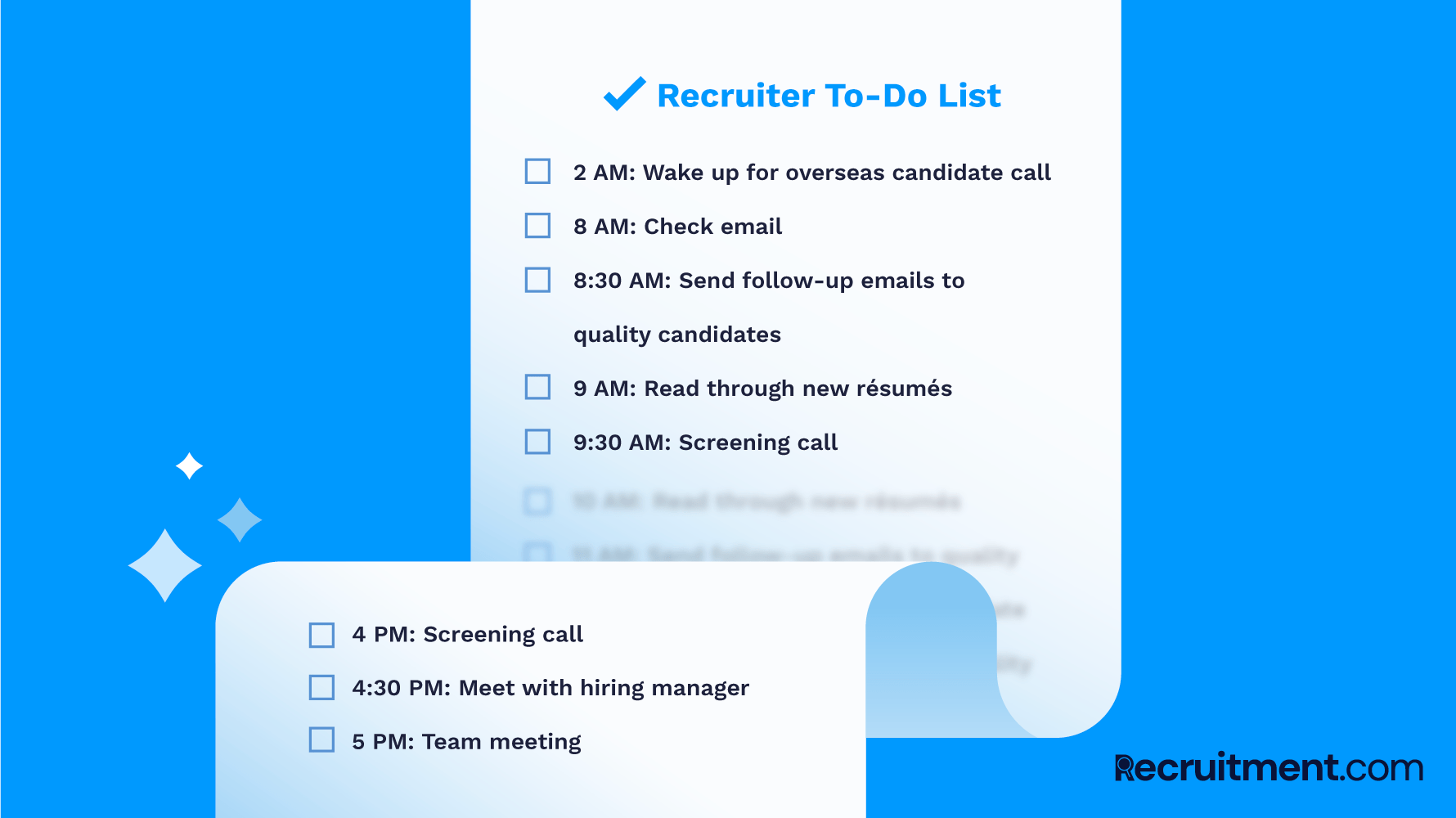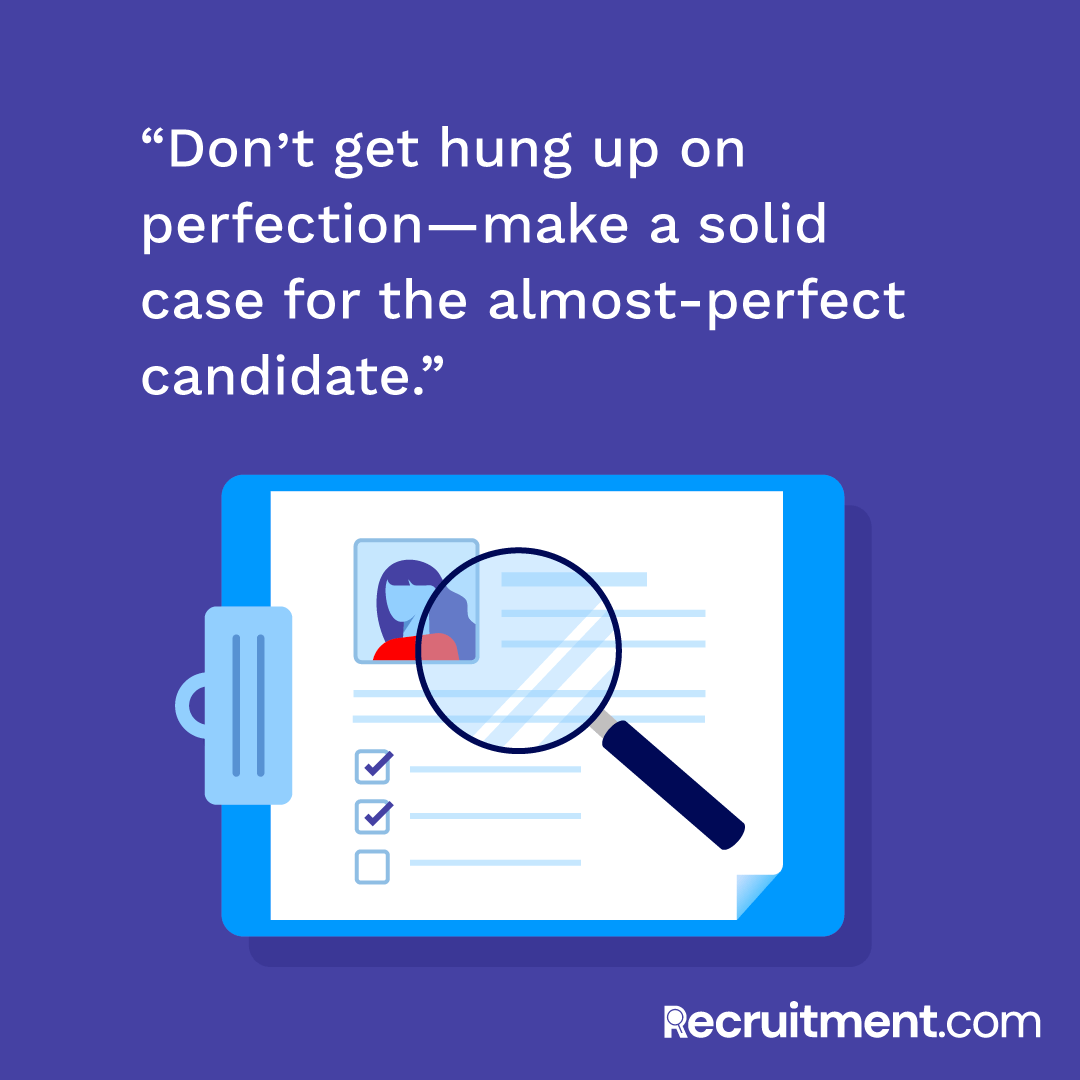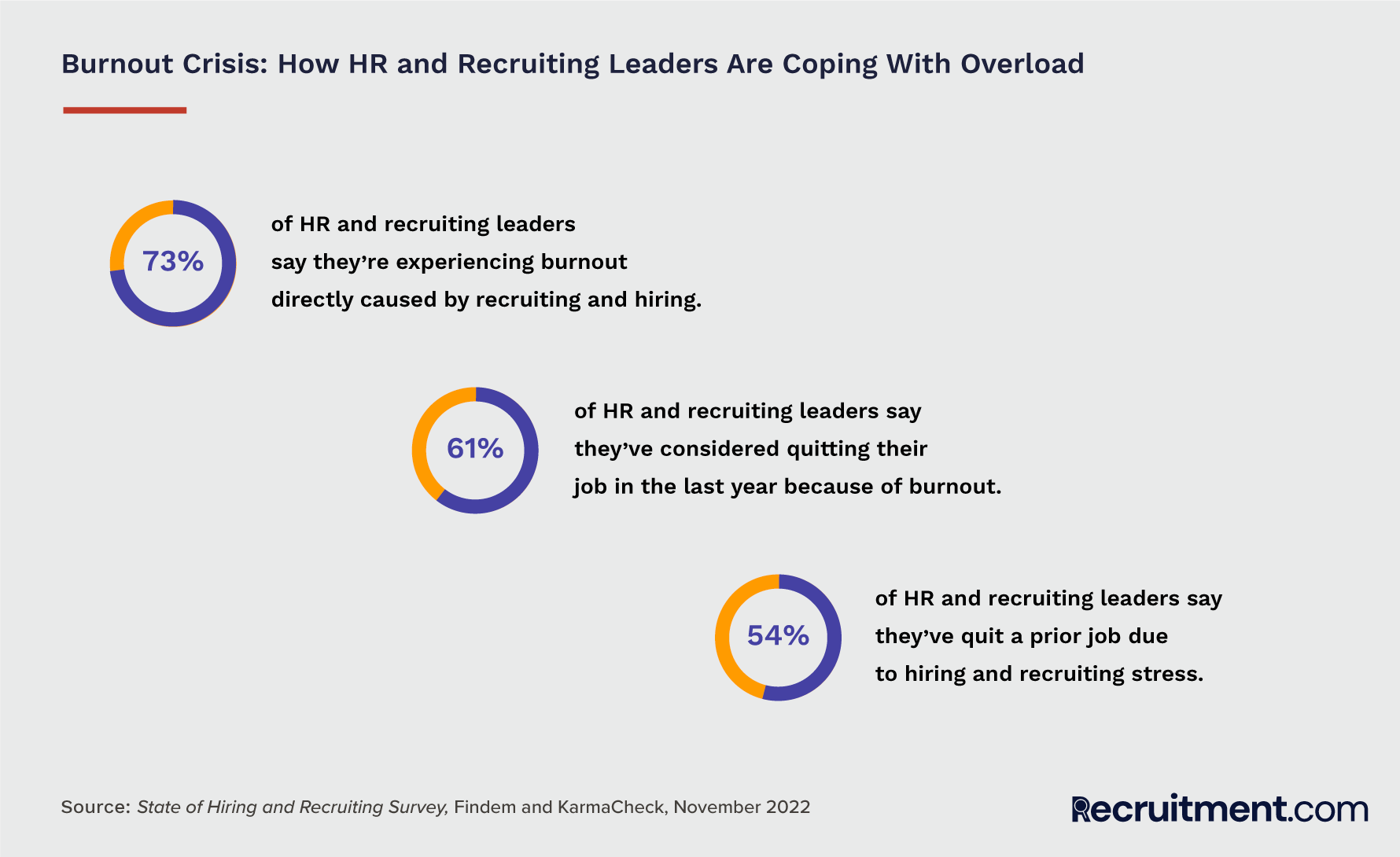Burnout-proof Your Recruitment Career: Expert Advice for Staying Balanced on the Job

Cheri Hedrick has more than 20 years of recruiting experience with respected agencies, private businesses, and elite staffing firms. She is currently Manager of Talent Acquisition at Canon Medical Systems USA, Inc., where she leads a team of recruiting professionals. At Canon, she is also a Project Team Lead for the company’s first-ever military extern program.
Canon Medical’s Cheri Osmundsen shares tips to prevent recruiter burnout and keep your passion high in times of stress.
Picture this: You’ve spent countless hours identifying a single candidate from among the hundreds who meet the basic requirements for a challenging role open for almost a year. There have been months of phone screenings, interviews, internal Zoom calls for check-ins and next steps, Slack messages, follow-up emails, background checks, and calls to references—and pressure is building. After an exhaustive (and exhausting) search, you email the dream candidate to say you’re extending an offer. Fast-forward to 48 hours later—with no response. Your excitement fades. Then it hits you like a gut punch: Your perfect candidate ghosted you. You’re back to square one, feeling overwhelmed and worn down.

Nearly three-quarters of HR and recruiting leaders are feeling burned out, according to a recent survey of mid-size and large employers in the US. Half of those say misalignment between HR and hiring managers is a top factor in their burnout, along with handling repeatable tasks (43%) and finding quality candidates (42%). The same survey, conducted in late 2022, found that burnout is so severe that 61% of those polled said they had considered quitting their jobs in the last 12 months.
Recruiters are at the forefront of a jumbled post-pandemic mix of layoffs, historic talent shortages, and a still-hot job market. At the same time, workers are demanding greater flexibility in how and where they work, with many adding comprehensive compensation and benefits packages to their list of nonnegotiables for taking a new job.
I know recruiters who set alarms for 2 AM to talk with overseas candidates. We comb through hundreds of emails for a single job posting, endure time-consuming screening and vetting processes—and then have to cope with hiring managers who provide feedback like, “Who else can we find?” It’s a lot.
As Manager of Talent Acquisition at Canon Medical Systems USA, I have to think of creative, outside-the-box ways to navigate the current market conditions and attract top talent. And I also have to lead my team in ways that energize them to push through and remain hopeful and engaged despite economic uncertainty and disruption. Here’s what I’ve learned while navigating these choppy waters over the last couple of years.
There Are No “Purple Unicorns”
In a niche industry like mine, medical imaging, finding a talent pool with the scientific or technical background required for the position is an enormous challenge. We search for everything from scientists with PhDs who have significant experience in diagnostic imaging to field service engineers who are technically talented and have strong communication skills.
These engineers play an essential role in our company—they do upgrades, installs, and fixes on multimillion-dollar equipment. One of our biggest challenges right now is finding field service techs with the breadth of knowledge required for the role. We’re not the only ones struggling with this—according to ServicePower, more than 70% of field service companies say they are experiencing a skills shortage gap.
As recruiters, of course we have wish lists for our dream candidates. The people with the perfect education, ideal background, and extensive industry experience—all the bells and whistles. However, most people only fit some of the criteria for your and your hiring manager’s perfect candidate—or, as my team and I say, the “purple unicorn.” My advice in these cases is not to get hung up on perfection and make a solid case to the hiring manager for that almost-perfect candidate.
My team jokingly refers to ourselves as purple unicorn hunters: If a hiring manager says they want a unicorn, we’re going to try to find one. But if we can’t, it’s our job to put a great candidate forward and say, “Here’s the closest thing: a dapple-gray pony.”

Pinning our hopes on a dream candidate who has 100% of everything sets us up for discouragement and failure. As recruiters, we will consistently do our best to find hiring managers exactly what they want, but we must also be aware that this person does not always exist in today’s market.
Identify Signs of Burnout Early
Burnout is a vicious cycle. It can make you question your and your teammates’ abilities, leading to self-doubt and conflict. If you find yourself or your team members becoming irritable, snappish, or fatigued, or having other symptoms of burnout such as headaches, an inability to focus, or brain fog, it’s time to take action before things get worse.
I recently called a team meeting to talk about burnout specifically. I stressed the importance of taking breaks for mental health. Most of us are programmed to be at our desks from 9 to 5 (or, more realistically, 8 to 6), but I tell my team that if they feel like they’re going in circles, they’re just clicking a mouse and not getting anywhere. And they know that I don’t track their keystrokes; I know they are producing, and I want them to be in a good place mentally. So give yourself permission to step back and get up from your chair. Go for a walk, get coffee, or do some exercise that takes your mind off things for a while. I have a spin bike in my garage, and when I need a break, I get up from my desk and work out, even if it’s just for five minutes.
It takes some time to accept that stepping away in the middle of the day is OK. Scientific evidence shows that even micro-breaks will increase your productivity. The challenge is allowing yourself permission to do it. We’re programmed to believe that if we sit in front of our computers and buckle down, focus will happen, but that’s not always true. Take a break. Grab lunch. The work will still be there.
Make the Call
I also recommend reaching out to others and not isolating yourself. Sometimes just picking up the phone, calling a colleague, and saying, “Hey, do you have a second to chat? I want to ask you about XYZ,” can be helpful. The conversation initially starts out work-related, but maybe it pivots to “How was your weekend? I saw your Instagram posts—I didn’t know your daughter rides horses.”
I’m always pleasantly surprised by how well this works. I often tell myself, “OK, I need to get an answer to this question, so I can send an email.” But if I pick up the phone, I may get the gift of an unexpected conversation. Making that call gives you the human connection you didn’t know you needed until you started talking. It’s a great way to prevent recruiter stress—knowing you’re not alone is comforting.
Open the Door to an Open Door Policy
As a leader, there are times you’ll see members of your team struggle. By creating a safe space for your employees to say, “I need to take a break” or “I need to leave early,” you’re building a welcome environment of vulnerability. Initiating an open door policy will help them feel comfortable discussing an issue with you and figuring out why they may be having a hard time. I’ve worked for some companies where I didn’t have that comfort, and I constantly felt like I had to prove myself and wasn’t allowed to make mistakes.
I think it’s essential for employees to feel comfortable being transparent with leadership instead of bottling up anxiety and feeling overwhelmed. In my experience, managers with open lines of communication help their people feel valued, both as employees and as human beings, which can temper anxiety and help prevent burnout.

Say Thank You
I learned something at the job I had in college that I’ve carried throughout my career. I was working in retail, and my manager thanked me every day when I left for just coming to work and doing a great job. I don’t thank my team daily, but I thank them at the end of every week for their contributions. I want them to get recognition for their hard work and to feel valued by me and the company. I like to call out both the small and the significant accomplishments; we often overlook the little things, but they have an impact.
Embrace the Journey
A recruiter’s job is complex. Especially right now. But despite the strain, I’ve found my career in recruiting extremely rewarding and fulfilling. Where else can you change a person’s life by placing them in their dream job? Or impact an entire company’s success with a single great hire? The challenge, excitement, and energy of the next great placement keep me and my team moving forward.
Now get back to your search for those purple unicorns! But don’t forget to take a second look at the dapple-gray ponies—those solid candidates who may not be perfect, but are exactly what you need.

Cheri Hedrick has more than 20 years of recruiting experience with respected agencies, private businesses, and elite staffing firms. She is currently Manager of Talent Acquisition at Canon Medical Systems USA, Inc., where she leads a team of recruiting professionals. At Canon, she is also a Project Team Lead for the company’s first-ever military extern program.



